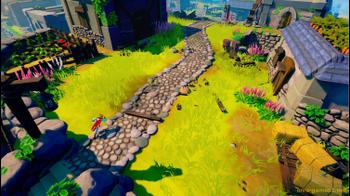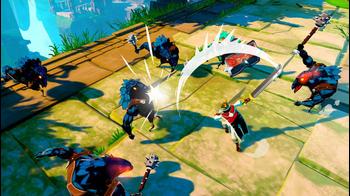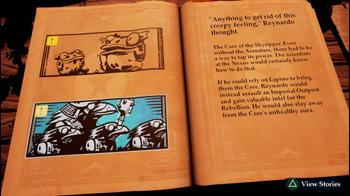Stories: The Path of Destinies Review
The storybook tale of Stories: The Path of Destinies tells the story of Reynardo, a rogue fox who is leading a rebellion to fight against an evil empire that is about to crush the freedom the world once had. To help him on his journey, he comes into possession of a magical book that allows him to go back in time to trial and error his way through the adventure.
The role of choice plays a very important role in Stories. At the end of each level, the player will have to make some tough decisions. The choices the player makes causes the story to branch out, and those branching storylines continue to branch over and over until you reach one of many endings. The consequences of your actions feel far more tangible than they normally do in other games.
These decisions can lead to entirely different stories and themes - whether that’s romance, comedy, or tragedy - that can mean searching for a powerful artifact or convincing a childhood friend to take your side.
Even the maps themselves have different paths you can explore, keeping each playthrough relatively fresh. All of this does well in serving its strong character development. We learn a lot about Reynardo and the other participants of the narration.
It is with these choices that Stories gets a lot of its replayability. While each ending takes approximately half an hour to complete, there are two dozen different endings to unlock. The game presents a summary of choices that were make, unlocking new ones on a sequential attempt. Reynardo is constantly learning from his mistakes over the course of the game with a wink and a nod to every key moment that kept me as the player absorbed.
Each important moment gains new meaning that wasn’t there previously. This helped to ease the repetitious nature of the game, though there were times when the game ended very abruptly, hurting its enjoyment.
The combat featured in Stories is not unlike what you would find in a modern action game. As an enemy goes to attack, they give a tell that forces the player to act. By parrying an enemy’s attack at the right moment, time will slow down allowing Reynardo to either dash to another enemy and set up a combo, or avoid a battle entirely to recover.
?It reminds me of the Batman series by Rocksteady - being able to dash from one enemy to the next at a breakneck pace even if they are across the map, allowing for some ridiculously fun moments. The downside is that battles move so quickly that they can be over only seconds later.
There are four different swords Reynardo has at his disposal: Hero, Ice, Fire, and Void. While you unlock the Hero sword at the beginning, the remaining weapons must be crafted using materials found around the environment or from treasure chests.
Each of these swords has magical powers. For example, the Hero sword can recover health while the Void sword slows down time. There are also sword-coded doors in each level that prevents access to hidden treasure.
As your character levels up, points are unlocked that can be spent on a skill tree. These abilities include being able to dash towards or even through an enemy, Shinobi style, or obtaining a grappling hook to traverse the environment or rip an enemy’s shield away from them. This offers a nice incentive to keep players coming back and experiencing the journey once again.
?Let me first say that the game has some great art direction. Using Unreal Engine 4’s technology, Stories presents a beautiful cel-shaded world filled with colorful particle effects and smooth animation. There is a strong attention to detail at every corner of the map.
The sound design is especially strong. Julian Casey does a great job weaving the narrative with melodrama and snarkiness, even changing his voice to match each character not unlike a parent doing their best to tell their kid an engaging story. The orchestrated music pulls you in and does an amazing job fitting in with the atmosphere.
However, while things look easy on the eyes, the physics in the world can cause serious problems. The framerate takes a nosedive when there are too many objects on screen at once. There was a certain level where I found myself stuck in the level after dashing too quickly up a set of stairs. I couldn’t even watch the true ending to the game because the game ended the final battle too early, allowing an enemy to kill me and having me stare at a Game Over screen while listening to the ending dialogue.
Technical issues aside, Stories: The Path of Destinies is a fantastic outing for Spearhead Games. Whether it’s the exciting combat, beautiful visuals, or branching narrative, there is plenty of value to be had in this low-priced title. It has fun betraying the player’s expectations, and that’s the biggest compliment I can give this gem of a game.


